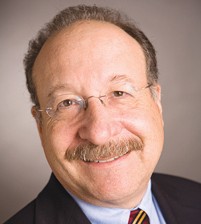When Henry Thompson returned to the West Coast just two years ago to take the helm of Santa Barbara Airport, it looked like most of the turbulence was in the rearview mirror.
The region’s largest airport had lured back flights lost during the Great Recession and had just added Contour Airlines. The disruptions caused by the Thomas Fire and deadly debris flows were fading memories.
“We had a record year in 2019,” he told me in an extended phone call. Then came the pandemic and business went into a tailspin. Traffic fell by roughly half and airlines cut back and suspended service.
“There was all kind of uncertainty,” said Thompson, an Air Force veteran who arrived as airport director after running a two-airport system in Shreveport, Louisiana.

From the Editor
But Thompson knew California, having worked at San Francisco International Airport for 24 years before moving to Shreveport. He began to accelerate talks with a long-sought but elusive target: Southwest Airlines.
Thompson’s efforts paid off in late December when Southwest announced service to Santa Barbara starting later this year. He got a smaller win when Alaska Airlines said it would fly nonstop to San Diego, opening up another California market.
Southwest’s arrival is viewed by many as a game-changing development that could create a viable alternative to United and American, with reliable, frequent domestic service at reasonable cost.
As it turns out, the aviation crisis triggered by the pandemic helped create a once-in-a-generation opportunity.
When he arrived in Santa Barbara, Thompson got up to speed on the talks between Dallas-based Southwest and airport officials, which went back 15 years or more.
“We already were at the top of their list,” he said, adding that Visit Santa Barbara and CEO Kathy Janega-Dykes played a key role in talks with the airline.
“We have been in discussions with Santa Barbara for a number of years,” confirmed Southwest spokesman Brad Hawkins. “The lack of available aircraft was the main factor in not adding it already.”
As the pandemic proceeded, Southwest got kudos for its empty middle seat policy and for not laying off personnel.
It also was beginning to create an expanded inventory of planes to serve small and medium-sized California markets outside of Los Angeles and San Francisco. In some ways, that mirrored expansion moves by several large financial institutions in the early 2000s when they expanded their footprints on the Central Coast, and by hotel groups like Marriott, which expanded its presence in the market when it re-flagged the Bacara Resort & Spa as a Ritz-Carlton.
Southwest announced Palm Springs service first, then Santa Barbara and Fresno on the same day in December. Southwest said the expansion is part of a nationwide effort to add 12 new cities in the first half of 2021.
Neither Thompson or Southwest would comment directly on the routes to be served from Santa Barbara, but based on my years of experience as the airline reporter at The Denver Post, I’d put money on Denver, the Bay Area and Phoenix or Dallas—places that already have a big Southwest presence. Las Vegas and Sacramento could also be in the mix.
The surge in leisure travel on the Central Coast in the pre-pandemic years is what attracted Southwest to the area, Hawkins said. Hotel openings in San Luis Obispo and Santa Barbara counties—including the Rosewood Miramar and Hotel Californian—helped make the case. Southwest also expects to build new traffic as it markets a service area that ranges from the Conejo Valley to Paso Robles.
For business flyers, it means no more early morning drives to Burbank to catch a flight. And Hawkins said that in a post-pandemic world, Southwest will have a role in economic recovery. “Affordable travel to business customers” could help entrepreneurs “get their businesses moving again,” he said.
The recent surge in COVID-19 cases on the Central Coast is a stark reminder that the takeoff of aviation later this year may not be all that smooth.
But Southwest is determined to expand on its position as No. 1 in California in terms of passenger traffic, and that means new options for business and leisure travelers. And a big win for Thompson in a difficult time.
• Business Times editor Henry Dubroff can be reached at hdubroff@pacbiztimes.com.






 Print
Print Email
Email














